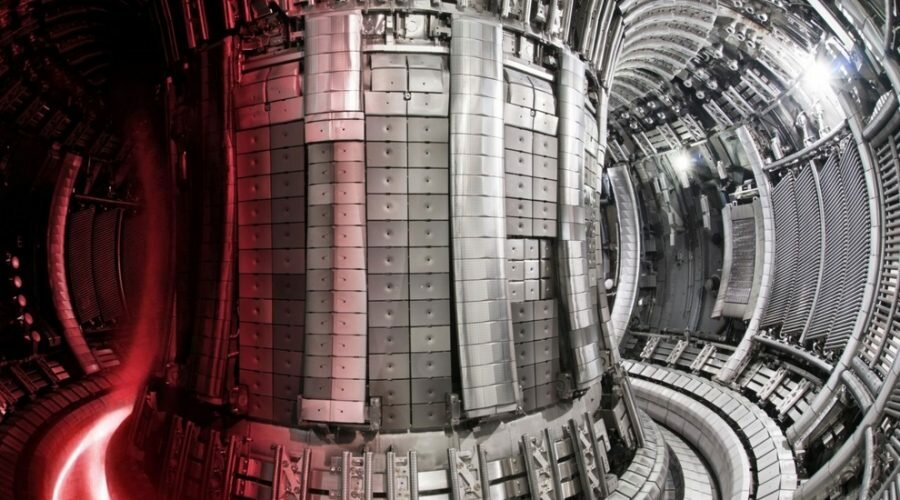A scientific experiment that mimics the way in which our sun powers itself has set a new record for generating energy, in a breakthrough that raises the prospect of one day developing a near limitless source of power.
The team, from the Joint European Torus (JET) in Oxford, managed to generate 59 megajoules of energy through nuclear fusion. This is more than double the previous record set in 1997, according to the UK Atomic Energy Authority (UKAEA).
The results are good news for advocates of nuclear energy as a clean alternative to fossil fuels.
“As pressures mount to address the effects of climate change through decarbonising energy production, this success is a major step forward on fusion’s roadmap as a safe, efficient, low carbon means of tackling the global energy crisis,” UKAEA said in a statement.
The CEO of UKAEA, Ian Chapman, says the results are “landmark” and will bring us “a huge step closer” to virtually emissions-free energy.
“It’s clear we must make significant changes to address the effects of climate change, and fusion offers so much potential,” Chapman says.
“We’re building the knowledge and developing the new technology required to deliver a low carbon, sustainable source of baseload energy that helps protect the planet for future generations.
“Our world needs fusion energy,” he adds.
What is the difference between nuclear fission and nuclear fusion?
In the simplest terms, both fission and fusion produce energy from atoms.
Nuclear fission is the method currently used in power plants where uranium atoms from a heavy, unstable nucleus are split into two or more lighter nuclei.
Nuclear fusion is the other way around and involves fusing two light atoms into a larger one. This process aims to reproduce what happens in the heart of the sun.
Supporters of nuclear fusion consider it to be the energy of tomorrow. The process produces very little waste that is much less radioactive than that from a conventional nuclear power plant. Fusion also generates no greenhouse gases.
Nuclear fusion could hypothetically produce four million times more energy than coal, oil or gas – without releasing harmful gases.
How soon could nuclear fusion be used to generate power?
Research is still in its very early stages and today’s announcement only shows the possibility of creating fusion energy for five seconds – not enough for the process to be viable.
“If we can maintain the fusion for five seconds, we can do it for five minutes, and then for five hours” with more efficient machines in the future, estimates Tony Donne, of the EUROfusion consortium.
The data gathered in Oxford could also be useful for the ITER reactor under construction in the south of France, which is even more advanced than JET.
“Research and innovations being done here in the UK, together with our partners across Europe, are making fusion energy a reality,” said parliamentary under-secretary for science George Freeman.
Sources

